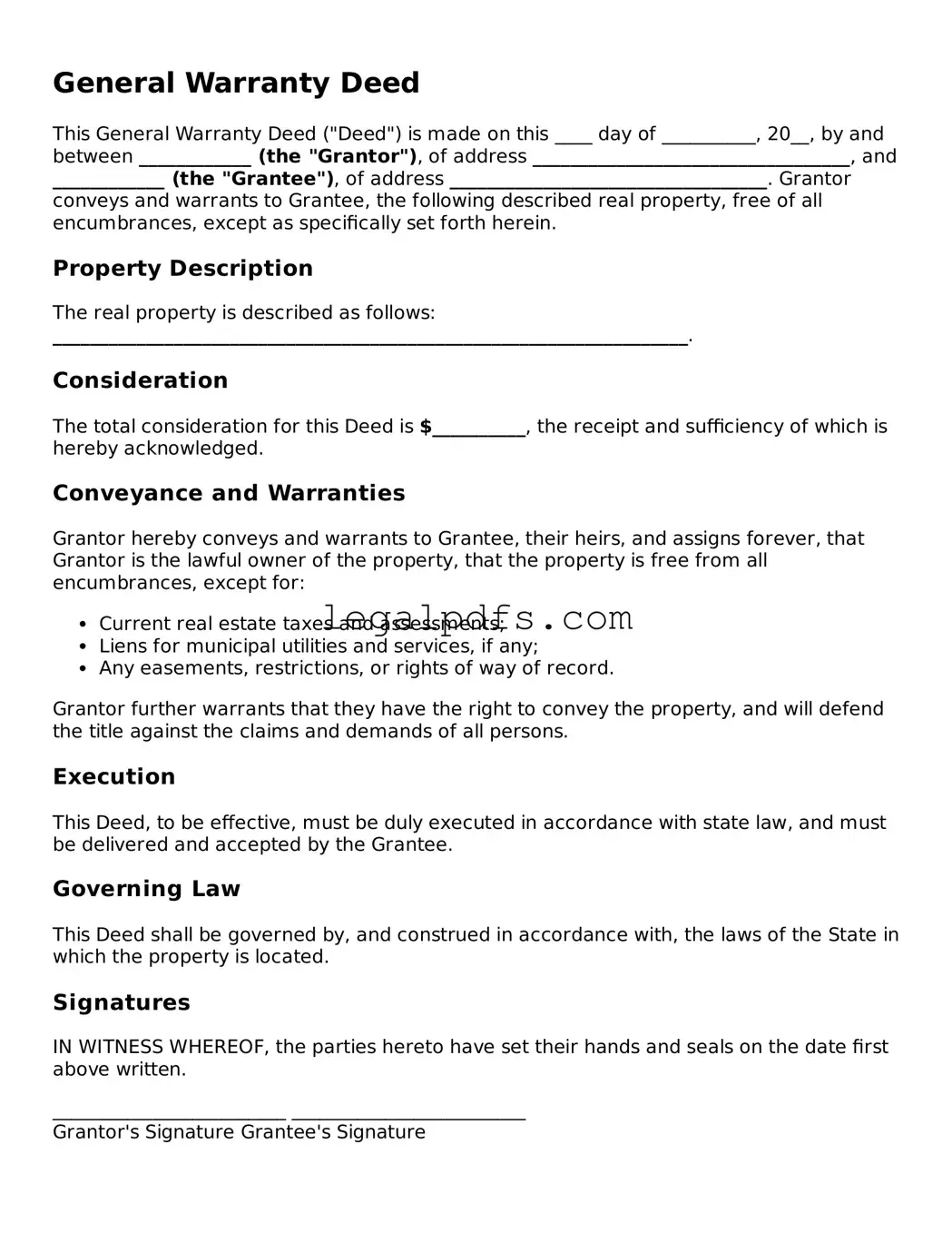General Warranty Deed
This General Warranty Deed ("Deed") is made on this ____ day of __________, 20__, by and between ____________ (the "Grantor"), of address __________________________________, and ____________ (the "Grantee"), of address __________________________________. Grantor conveys and warrants to Grantee, the following described real property, free of all encumbrances, except as specifically set forth herein.
Property Description
The real property is described as follows: ____________________________________________________________________.
Consideration
The total consideration for this Deed is $__________, the receipt and sufficiency of which is hereby acknowledged.
Conveyance and Warranties
Grantor hereby conveys and warrants to Grantee, their heirs, and assigns forever, that Grantor is the lawful owner of the property, that the property is free from all encumbrances, except for:
- Current real estate taxes and assessments;
- Liens for municipal utilities and services, if any;
- Any easements, restrictions, or rights of way of record.
Grantor further warrants that they have the right to convey the property, and will defend the title against the claims and demands of all persons.
Execution
This Deed, to be effective, must be duly executed in accordance with state law, and must be delivered and accepted by the Grantee.
Governing Law
This Deed shall be governed by, and construed in accordance with, the laws of the State in which the property is located.
Signatures
IN WITNESS WHEREOF, the parties hereto have set their hands and seals on the date first above written.
_________________________ _________________________
Grantor's Signature Grantee's Signature
_________________________ _________________________
Grantor's Printed Name Grantee's Printed Name
State of _________________________
County of _______________________
This document was acknowledged before me on ___ day of __________, 20__, by ____________________ (name of Grantor) and ____________________ (name of Grantee).
_________________________
Notary Public
My Commission Expires: ___________
